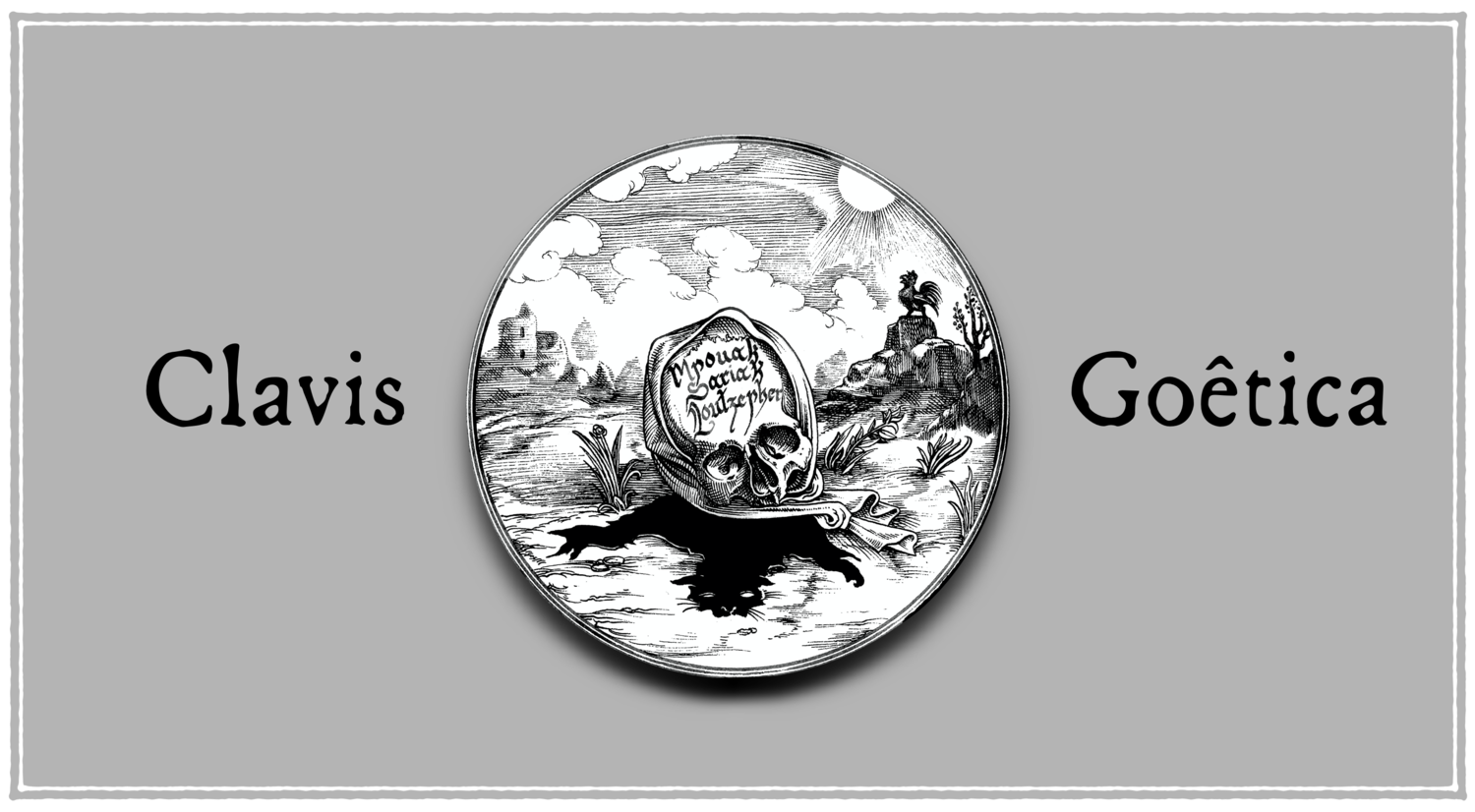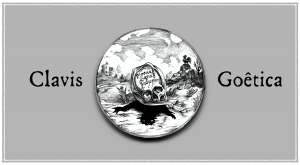Noted occult author Frater Acher recently shared the Introduction to his upcoming book Clavis Goêtica which will be published by Hadean Press, pre-orders opening January 2021:
“γοητεία is an Ancient Greek word which literally translates as goêteia (sorcery). The Latinised version goetia reads more familiar to most modern practitioners. In this book I am using the phonetic transcription of the original Greek word to reference the spirit of this work – to return to the origins of this form of chthonic spirit work, stripping away more recent additions or re-interpretations of it.
“It was more than ten years ago, in 2010 that Jake Stratton-Kent, with the critical publication of his Geosophia: The Argo of Magic threw the first stone at the glasshouse of Modern Western Magic as we knew it. This stone was thrown from the stained hands of a maverick practitioner who had navigated deep into the terra incognita of ancient magical history. What he had rediscovered, right before the dawn of Greek philosophy in the 6th century BCE, were the ancient shamanic roots of Western Magic: A heritage so unruly and untamed in spirit, it had required immediate binding and exorcising by philosophers and politicians at the time. For a society that was obsessed with the socio-political experiment of the polis could not tolerate a rogue group of charismatic lone-path practitioners undermining the cohesive power of the newly emerging social collective. Thus the ancient term of the goês, the grave-dweller and skull-speaker, quickly became replaced with the fashionable Persian loanword of the mage. Just like Christian churches many centuries later were erected upon heathen sanctuaries, so also much of Western Magic as we know it was erected over the fervid coals and carved skulls of ancient goêtia. – Thus ten years ago, by the stone and glass shards landing in our laps, we were starkly reminded that orthodoxy always is a thin veneer of lies over a much more wild and tangled, truly unorthodox past.
“The present volume therefore owes a lot to the work of JSK, as well as authors of earlier publications on the same topic, such as Will-Erich Peuckert, Walter Burkert, Sarah Iles Johnston or Daniel Ogden. What was born from their inspiration, the slender book you hold in your hands or read on your electronic screens, truly is a bastard in the original sense of the word. Being a packsaddle son conceived while traveling on my own journey into the goêtic realm, this book aims to unite critical academic source-knowledge on the origin of the goêtic craft with first-hand experiences, both form yours truly, as well as of practitioners from centuries much closer to our own. Obviously, from an academic vantage point, the pure attempt to unite theory and practice, etic and emic perspectives on chthonic sorcery in the body of a single book discredits any such undertaking from the get go. Especially as we are not even sticking to the fragile guardrails of the method of participative ethnography; rather we have gone native in a pretty absolute sense: Over more than a decade now I have been actively working as a goês in a mountain cave in the Northern-Alps. The real-life as well as spiritual experiences made as part of these journeys, to me at least, hold the same ontological reality or fragility as the very coffee cup I hold in my hands right now. The chthonic spirits with whom I had the chance to commune and collaborate could not be less interested in human psychology, academic publishing standards, or magical lineage for that matter. If anything at all, they hold an active interest in restoring and maintaining the tides of nature – and putting us humans to good work in the spheres of reality that they cannot reach themselves as easily as we do. Neither natural exploitation nor transmutation is their interest, yet if we were to regain their trust, interspecies symbiosis might be.
“The structure of this book is similar to the one of Holy Daimon (Scarlet Imprint, 2018): We begin with a foundation in history, then move on to accounts of modern practitioners and conclude with detailed tactical instructions, focussing on the tradition of divining-skulls or teraphim.
“Thus we start out by looking into the mirror of our ancient past. Understanding the Ancient Greek mythological sources, that are woven into the very words and practices of this craft, is a necessity before we can attempt to stride out on our own path. The first chapter explores the historic origins of primal goêteia, and was first published in 2017 as Goêteia – explorations in chthonic sorcery on theomagica.com. Particular emphasis is placed upon the role of the Idaian Dactyls, the role of the Great Mother and thus the sensitive function of the goês as an intermediary agent between the Promethean offspring and the primal mother-consciousness most easily accessed through cavernous mountain-wombs.
“Following these historic foundations, we touch upon my own goêtic practices over the last decade and critical learnings derived from it, only to correlate the latter to the practice of two goês from High Medieval and Early Modern times. The title of this book, Clavis Goêtica might shine in a different light, once we heard the story of the Rosicrucian adept and white-goês Johannes Beer, and his particular way of using goêtic keys to commune with the spirits of the underworld.
“In the final third of this humble volume we are going to work with a Necromantic divination rite whose current manuscript stems from the 18th century, yet whose original roots reach far back into our magical past. This goêtic grimoire not only presents us with an authentic ritual of kephalomancy, i.e. divining from a human skull, but provides an exemplary account of illustrating the shamanic nature of the work of the goês. As we will see, unrestrained by the flawed social morality of their (and still our) time, the practitioner of the Ars Phytonica is invited to establish a juncture between heaven and earth, between chthonic and celestial realms, by means of their direct communion with a host of spiritual beings as well as a simple mantic skull.
“We conclude our explorations with a final gift by José Gabriel Alegría, who went beyond the outstanding iconographic contributions to this volume by also including his own written reflections on the Ars Phytonica, in his most succinct essay Of Talking Heads and Solar Skulls.
“The purpose of this book, thus, is quintessentially shamanic: These pages are meant to catch fire in your own hands, to burn and turn to ashes, to wash down into the underworld, and to come back to you as a wind – in dreams, trance or everyday reality – in which you hear the chthonic voices of the spirits.
“Finally, I have to express my deep gratitude to Anne Hila for her shared passion for apocryphal magical manuscripts and her genuinely inspired transcription and translation skills, which she kindly offered so freely. Furthermore I want to thank José Gabriel Alegría for the many enchanting pieces of art he contributed to this release. To be able to collaborate with an exceptional artist like him is already a privilege; but to also meet a familiar soul in the study of goêtia – one working with the ink that draws, the other with the ink that writes – is truly rare. Equally my gratitude goes out to Hadean Press for being so patient with me in reworking and finishing these texts. Without their deep expertise, faith and partnership this book would not exist. “
for more info: https://theomagica.com/blog/clavis-goetica-introduction.


